Here, I list a few of my recent projects. This page may get outdated over time. If it does, please refer to my InspireHEP page for a complete list of my publications. If you are a student (at any stage of your career) and are curious about what I’m busy with these days, drop me a line!
I study very different phenomena ranging from astrophysics, and cosmology, to low-energy precision measurements in the lab. I am mostly passionate about novel low-energy observables of high energy theories beyond the Standard Model (SM) of elementary particle physics, which provide elegant solutions to the open questions to date: What is dark matter? Why does the strong interaction preserve the time-reversal symmetry? Are there any gauge sectors beyond the SM gauge group? What can gravitational waves tell us about the inflation era of our Universe and the properties of the dark sector?
In short, they are under the common theme of searching for new physics with low-energy observables in the lab and cosmos.
Lab Searches
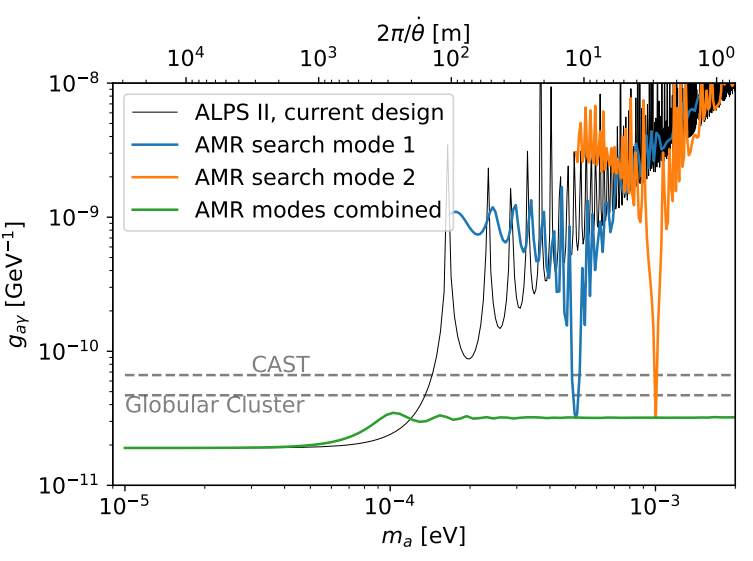
Light-shining-through-walls experiments remain to be one of the most accurate ways to probe axions. I identify the optimal experimental setup to induce a resonance in the axion-photon-magnetic field system. The conversion between axions and photons can be greatly enhanced by a helical magnetic profile. I show that light-shining-through-walls experiments such as CAST and ALPS can be enhanced by 2 orders of magnitude (!) with existing helical magnet technology. See arXiv:2308.10925 for the discussion of the experimental setup, the noise analysis, different analytical approaches, relation to previous works, and a lot more! See this twitter thread for a quick digest.

The muon anomalous magnetic moments measured by Brookhaven and Fermilab show a potential deviation from the Standard Model prediction. While it is widely known that axion effective field theory can address this discrepancy, we flesh out the challenges to UV complete these models due to the low cut-off scale combined with the current bounds from exotic Higgs decays, electroweak precision measurements, and light charged fermions. See JHEP 09 (2021) 101 for more details.
Galaxy Kinematics
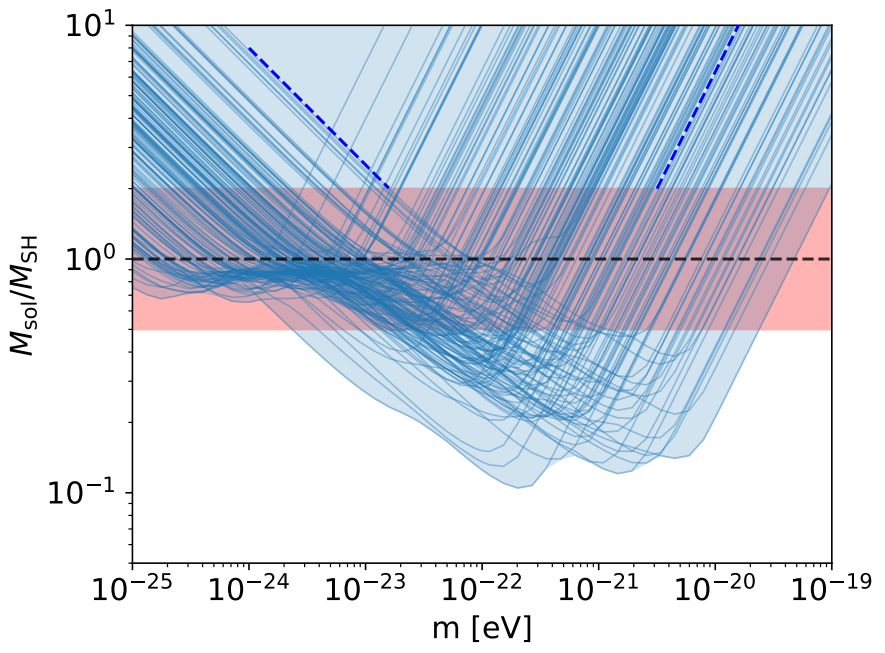
Axions can behave like cold dark matter when observed afar. However, the particle properties unique to ultralight particles of mass around \(10^{-20}\) electronvolt start to manifest due to the so-called quantum pressure. I show that galaxy rotation curves are particularly good at probing such structures. I performed a thorough analysis of 175 disk galaxies and yielded one of the strongest robust constraints on ultralight dark matter to date. Phys.Rev.D 105 (2022) 8, 083015
Cosmic Distance Measurement
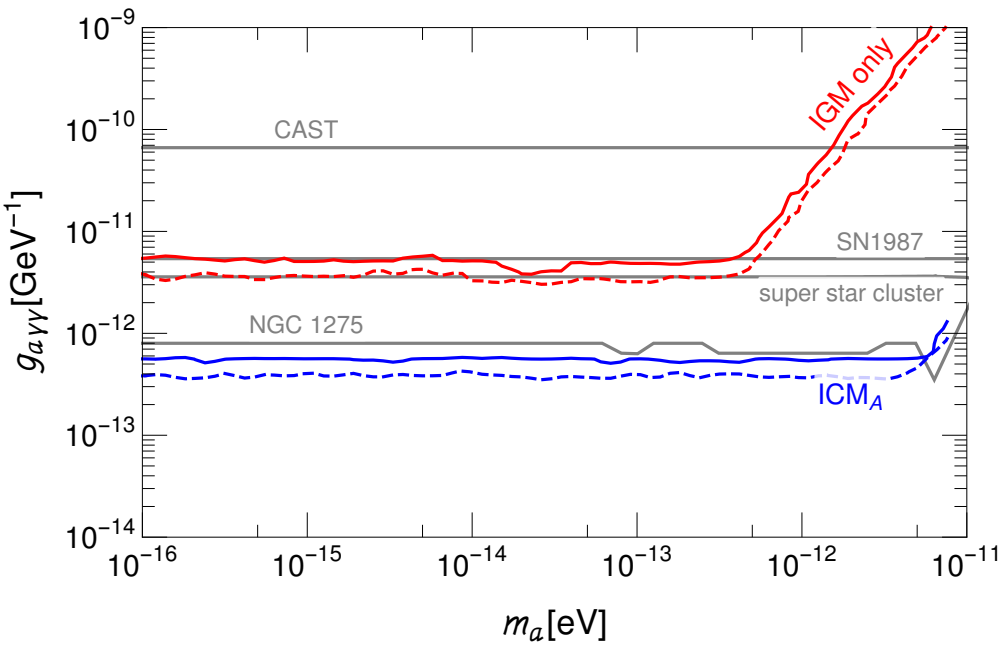
There is evidence of the existence of magnetic field spanning Mpc (inter-galactic medium) to kpc (intra-cluster medium). Photons traversing these structures will get extra dimming due to some of them converting to axions en route, which in turn biases the distance measurements that rely on the magnitude. In the early 2000s, it was conjectured that this could explain then newly discovered accelerated expansion of the Universe without invoking dark energy. Nowadays, evidence of dark energy is well-established across different channels, so I turned the idea to its head to probe/constrain the existence of axions using Type Ia supernovae and galaxy clusters and found interesting results. JHEP 02 (2022) 103
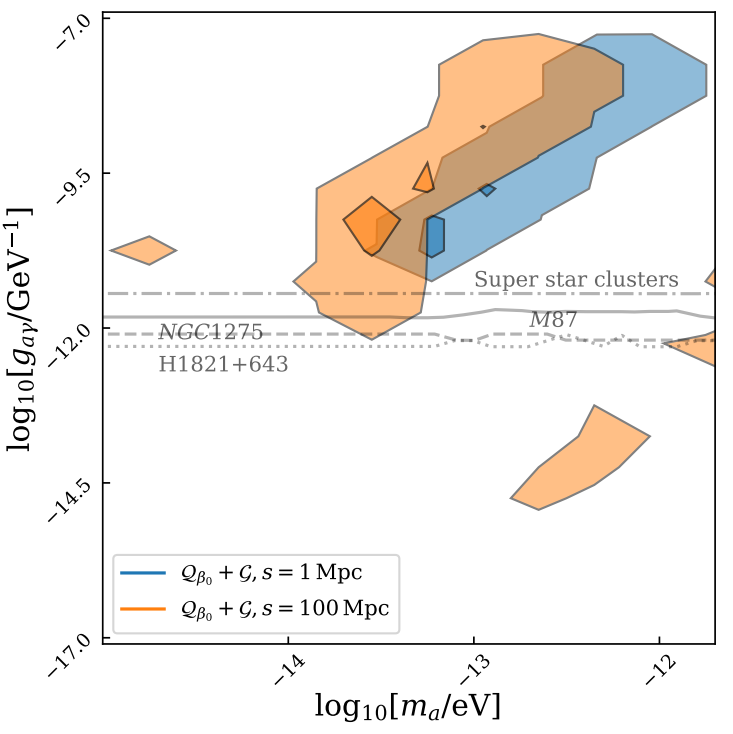
I examine the impact of axion-induced photon anomalous attenuation in quasar data sets. It turns out that it can address a previously known anomaly in the quasar data set better than any non-standard cosmology models. In particular, the so-called UV-X-ray relation of quasars can be effectively modified due to the energy dependence of photon-to-axion conversion en route in IGM magnetic fields. arXiv:2309.07212 [astro-ph.CO]
Radio Astronomy
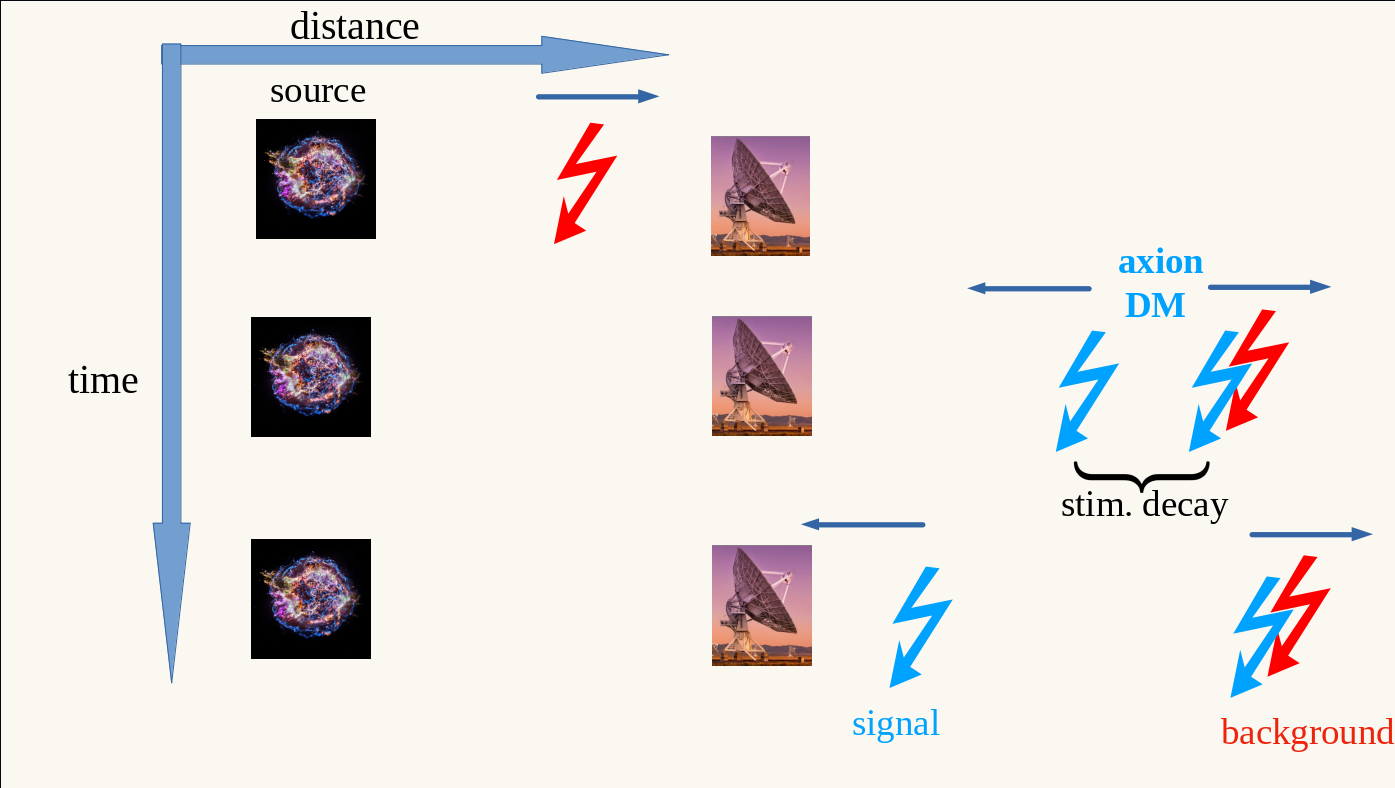
By analogy with the stimulated emission, any particles that can decay to photons can experience the so-called stimulated decay. This Bose-enhancement happens when there is a “dense” photon bath resulting in a large photon occupation number. Taking axions as an example, while one photon is indistinguishable from the ambient photons, the other travels in the direction opposite to the stimulating source to conserve energy and momentum. I identify that this “echo” photon is a prominent signal for photons sources that were historically bright. Phys.Rev.D 105 (2022) 7, 075006. See also the paper that appeared the same day on arXiv Phys.Rev.D 105 (2022) 6, 063007. This sparked a series of recent follow-ups including, but not limited to, Bhupal Dev et al., Todarello et al., Yitian Sun et al., Ariel Arza et al., among others.
Gravitational waves
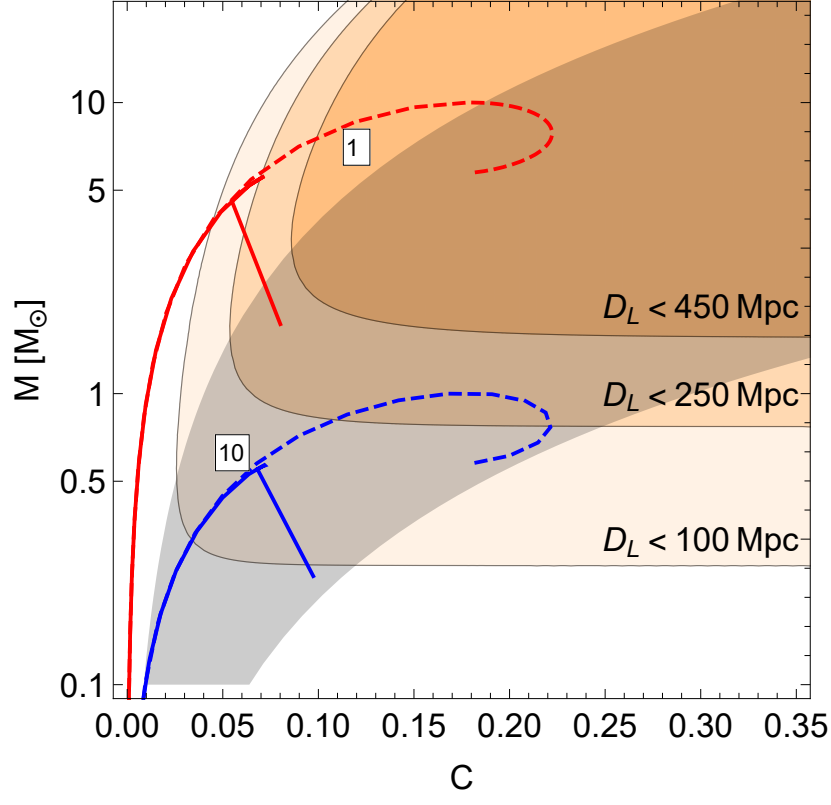
The detection of gravitational waves granted us a new view of the far-away regions of the Universe, the dense (and potentially exotic) astrophysical objects, and the time when the Universe was much younger. An interesting question is what fundamental new physics can it teach us? In this project, I demonstrate that gravitational signals from binary mergers can tell us about the global structures of the axion potential! The idea is that dense structures (i.e. boson stars) axions form depend on the axion potential, while the gravitational waves depend on the compactness and size of the structures. This lays out a clear way of connecting macroscopic observables (gravitational wave signals) to microscopic fundamental physics (axion-like particles). Check out JCAP 04 (2019) 008 for more details.
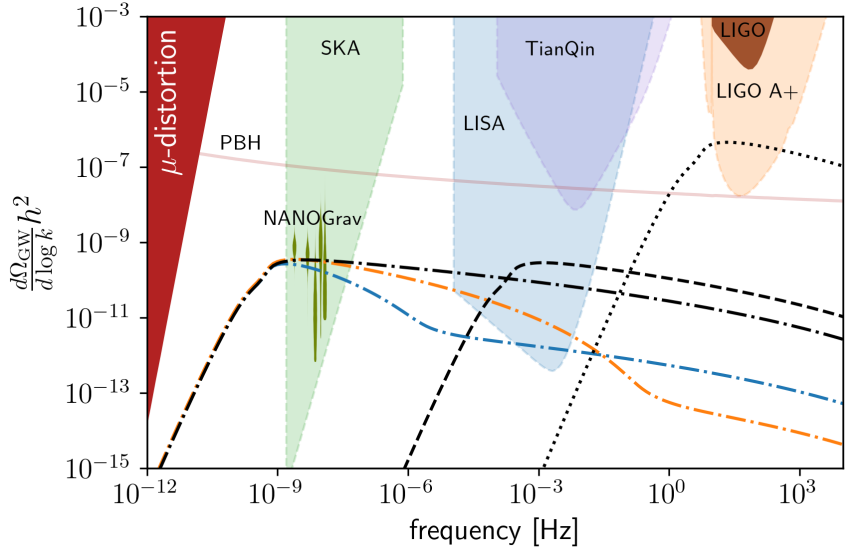
We all know that a strong first order phase transition creates bubbles, whose collisions in turn source gravitational waves. Do you know that a super slow phase transition can also source gravitational waves in a very different way? This is what I checked in this project. The idea is that the slow phase transition bubbles during inflation get stretched out of the horizon shortly after they form. Upon re-entering the horizon they lead to strong density perturbation, which in turn causes a perturbation of the metric. This gives us the gravitational waves that can be measured by many current and future gravitational wave detectors. Big shout out to Joel Barir, a student at Tel Aviv U., who did a fantastic job in this project! Phys. Rev. D 108, 115016
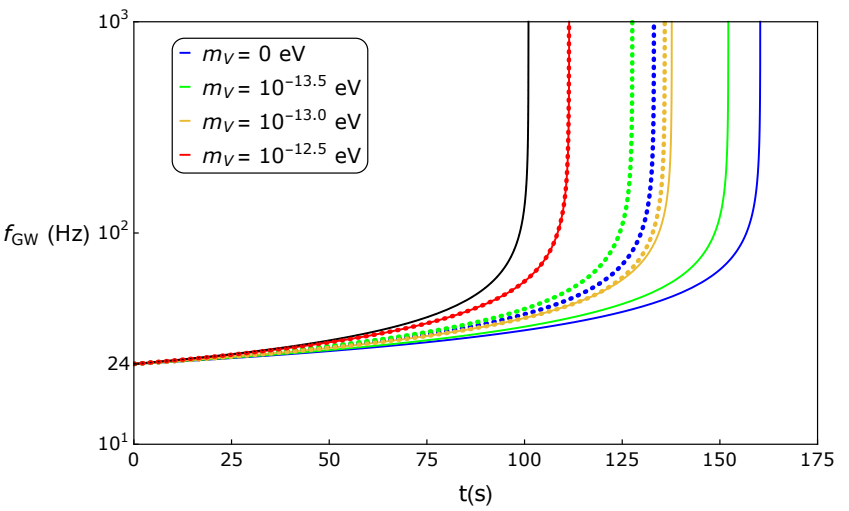
Aside from probing the global structure of axion-like particles’ potential, gravitational waves can also reveal insights of (dark) charges carried by neutron stars. With the late Ann Nelson, we show that the fifth force sourced by the (dark) charges modified the gravitational waves emitted by a binary merger due to the modification of the potential and the extra dipole radiation. Some notable citations include, but not limited to, Fabbrichesi and Urbano, Alexander et al, Kopp et al., Dror et al., Zhang et al. See Astrophys.J. 858 (2018) no.1, L2 for more details.
Neutrinos
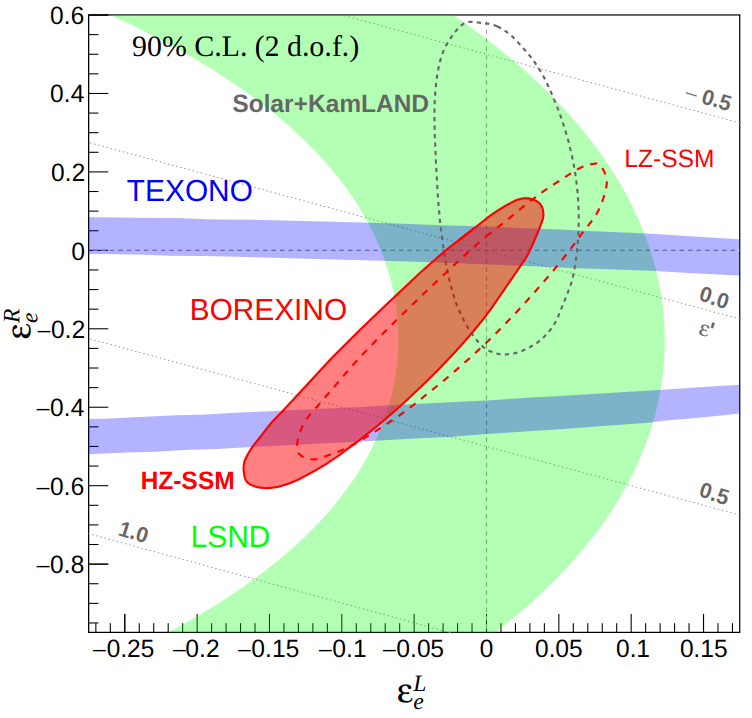
Neutrinos emitted by the sun is one of the best intense neutrino fluxes we have access to in Nature. On the other hand, it is interesting to test our electroweak theory framework by examining the neutrino sector to reveal any deviations from the Standard Model predictions in the IR. I worked with the Borexino collaboration to connect the two and set a world-leading model-independent constraint in the non-standard interactions of the neutrinos. JHEP 02 (2020) 038
